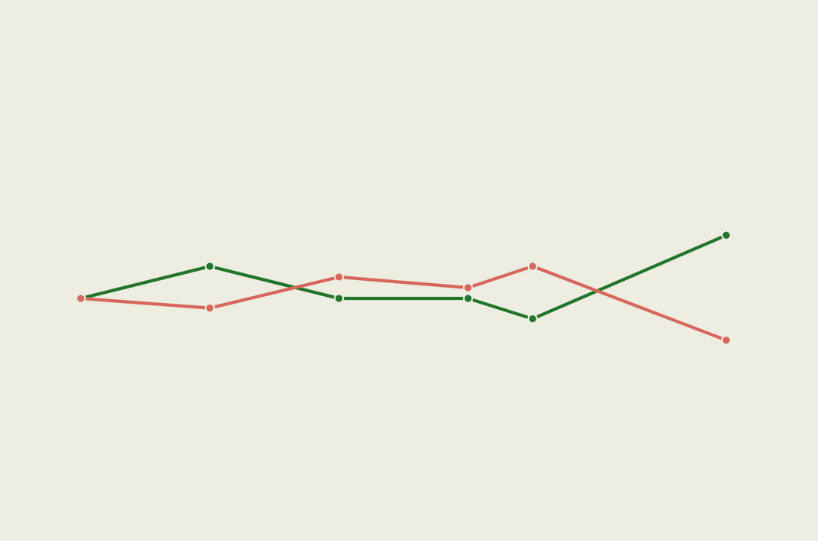A Power Shift Marks Mexico's Midterm Elections
A Power Shift Marks Mexico's Midterm Elections
Mexicans voted in midterm elections July 5 and, as polls predicted, the opposition Institutional Revolutionary Party gained the largest number of seats in the lower house of Congress.
Updated July 6 - Mexicans headed to the polls for congressional elections on July 5 and, as polls predicted, delivered a majority to the opposition party in lower Congress. With 500 seats at stake in the Chamber of Deputies and 128 in the Senate, the Institutional Revolutionary Party (PRI) gained the largest share of seats in the lower house. Not only that, but the PRI snatched up the largest share of the goernorships up for grabs. Such an outcome can be considered a comeback for the party that governed Mexico for much of the last century but saw voter mistrust over rigged elections result in a victory for the National Action Party (PAN) in 2000. Mexico's El Universal offers state-by-state coverage showing the PRI's electoral victory.
2009 hasn’t been kind to Mexico. Earlier this year, international media focus on drug cartel violence led President Felipe Calderón to deliver a vigorous defense of his government’s efforts to stem crime and corruption. Then an outbreak of the H1N1 virus delivered a blow to the country’s economy, which was already showing the impact of the U.S. financial downturn.
In spite of such woes, Calderón’s approval rating rose to its highest level last month, hitting 69 percent according to a Reforma survey. However, his popularity did not translate into poll leads for the PAN in Sunday’s elections. Under the Volcano blog logs six pre-election surveys, all of which placed the PRI ahead of the PAN. Margins ranged from 2 to 9 percent. After losing the lower house and five out of six governorships, Germán Martínez, the PAN's president, stepped down. Tales from San Lazaro blog suggests the reason was his negative campaigning about the PRI: "Martínez became an obstacle to Calderón pushing any sort of reforms through Congress in the latter half of his administration."
But the gains made by the centrist PRI also translated into losses for the left-leaning Party of the Democratic Revolution (PRD) than for the right-leaning PAN. Writing for the Americas Quarterly blog, Christopher Sabatini traces the PRD’s sharp gains in the Senate during the 2006 elections compared with current predictions suggesting the party would pull in as few as 15 percent of the votes. The main reason, he says, is the leadership style of Andres Manuel López Obrador (commonly known as AMLO), who repeatedly protested the results that found he lost the 2006 presidential election. “The problem for the PRD is that the AMLO is marching the party into oblivion,” writes Sabatini. A survey shows that more voters said they would never vote for the PRD out of eight parties included in the poll.
As far back as March, Harvard International Review blogger Jason Lakin predicted that PRD infighting would cost the party votes that would go to the PRI. But he also writes that the governing party faces its own challenges. “Nine years of PAN rule at the national level…have stolen some of that party’s sheen, too,” wrote Lakin. “A lot can happen in a few months in politics, but right now, the PRI still looks well-placed to benefit handsomely from the decline of its rivals.” Still, an RGE Monitor analysis says a victory by the PRI, unlikely to result in an absolute majority, would do little to harm Calderón’s reform agenda. “After its momentous defeat in the 2006 presidential and congressional elections, the PRI learned that adopting a negative role in Congress (i.e. blocking the government's initiatives, publicly confronting the executive) was a key factor behind its demise,” writes Alejandro Schtulmann of Emerging Markets Political Risk Analysis. But, following reports of the PRI's victory, party leader Beatriz Paredes promised an agenda that includes "profound changes in terms of economic issues."
Poor turnout was predicted for Sunday’s midterm election, with forecasts placing it as low as 30 percent. Moreover, a movement built called voto en blanco that calls on voters to reject the three main parties and deface ballots, write in candidates, or leave ballots blank. With 97 percent of votes counted, exit polls show more than 10.8 percent of voters taking that route in the country's capital while the rate stood at more than 5.8 percent nationally. Also, another movement called “Mi Voto por tu Compromiso” calls on candidates to sign a contract saying they agree to protect public safety and constitutional liberty.
Learn more:
- Audio: AS/COA program “Mexico Congressional Elections: Public Opinion, Economic Impact, and Political Implications”
- AS/COA Senior Policy Director and Americas Quarterly Editor-in-Chief Christopher Sabatini discusses “Mexico’s Mid-Term Elections: The Political and the Policy.”
- AQ Blog: "Mexico's PRI party Wins Big in Mid-Term Elections – What this Means for President Calderón"
- Mexico’s national electoral institution.
- The last set of poll figures ahead of the election.
- Voto en blanco website.
- Pacto Nacional Ciudadano “Mi Voto port tu Compromiso”
- Exit polls published by Grupo Reforma.








